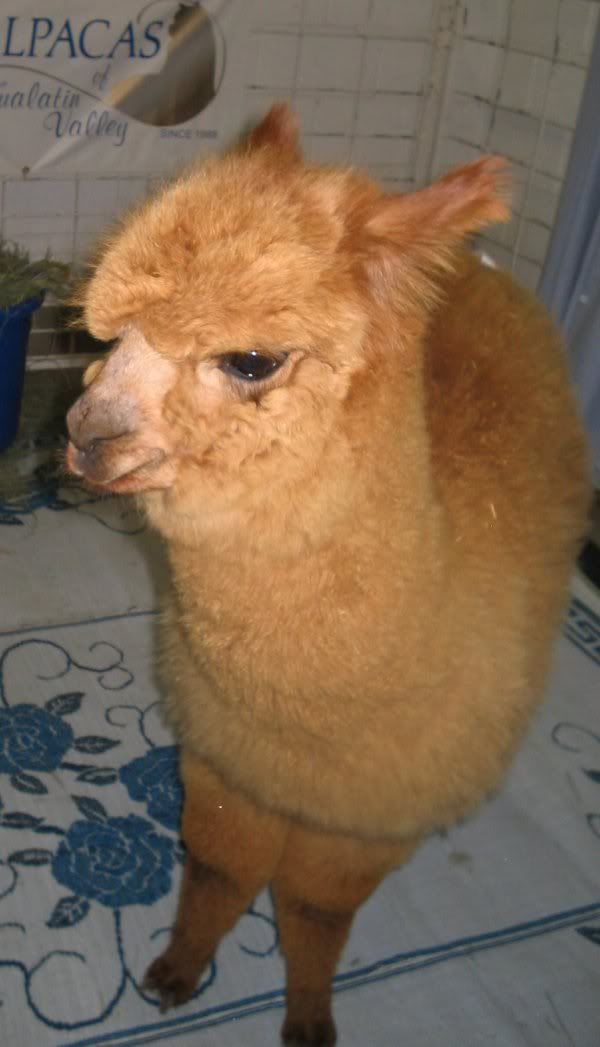
The Alpaca (Vicugna pacos) is one of two domesticated breeds of South American camel-like ungulates, derived from the wild guanaco. It resembles a sheep in appearance, but is larger in size, and has a long erect neck with a handsome head.Alpacas have been domesticated for thousands of years, and originate from Peru, Chile and Bolivia. There are no wild alpacas; it is believed that they are descended from the vicuna which is also native to South America. They are closely related to llamas which are descended from the guanaco. These four species of animals are collectively called camelids.Alpacas are social herd animals and should always be kept with others of their kind. They are gentle and elegant, inquisitive and observant. As they are a prey animal, rather than a predator, they are cautious and will understandably be nervous if they feel threatened. They like their own space and don’t appreciate another alpaca (or human) getting too close, especially from behind. They will warn the intruder away by threatening to spit, or by spitting, or by kicking. Some alpacas kick, some don’t – but yes, they all spit.
Spitting is reserved for other alpacas, not for humans, but sometimes the human can get in to the line of fire, or the alpaca aims badly and misses the intended target. Spit is not pleasant – it is the contents of the stomach, it is green (regurgitated grass) and smells foul.
Alpacas don’t like their heads being touched. Once they know their owners, and feel confident around them, they will probably allow their backs and necks to be touched, but they won’t appreciate being grabbed, especially by boisterous children. If an owner need to catch an alpaca, the neck offers a good handle – and holding the neck firmly between the arms is the best way to restrain the animal.
 The Tasmanian Devil (Sarcophilus laniarius), also referred to simply as 'the devil', is a carnivorous marsupial now found only in the Australian island state of Tasmania. The Tasmanian Devil is the only member of the genus Sarcophilus.[1] The size of a small dog, but stocky and muscular, the Tasmanian Devil is the largest carnivorous marsupial in the world. It is characterised by its black fur, offensive odour when stressed, extremely loud and disturbing screech, and viciousness when feeding. It is known to both hunt prey and scavenge carrion and although it is usually solitary, it sometimes eats with other devils.The Tasmanian Devil became extinct on the Australian mainland about 400 years before European settlement in 1788. Seen as a threat to livestock in Tasmania, devils were hunted until 1941, when they were officially protected.
The Tasmanian Devil (Sarcophilus laniarius), also referred to simply as 'the devil', is a carnivorous marsupial now found only in the Australian island state of Tasmania. The Tasmanian Devil is the only member of the genus Sarcophilus.[1] The size of a small dog, but stocky and muscular, the Tasmanian Devil is the largest carnivorous marsupial in the world. It is characterised by its black fur, offensive odour when stressed, extremely loud and disturbing screech, and viciousness when feeding. It is known to both hunt prey and scavenge carrion and although it is usually solitary, it sometimes eats with other devils.The Tasmanian Devil became extinct on the Australian mainland about 400 years before European settlement in 1788. Seen as a threat to livestock in Tasmania, devils were hunted until 1941, when they were officially protected.






